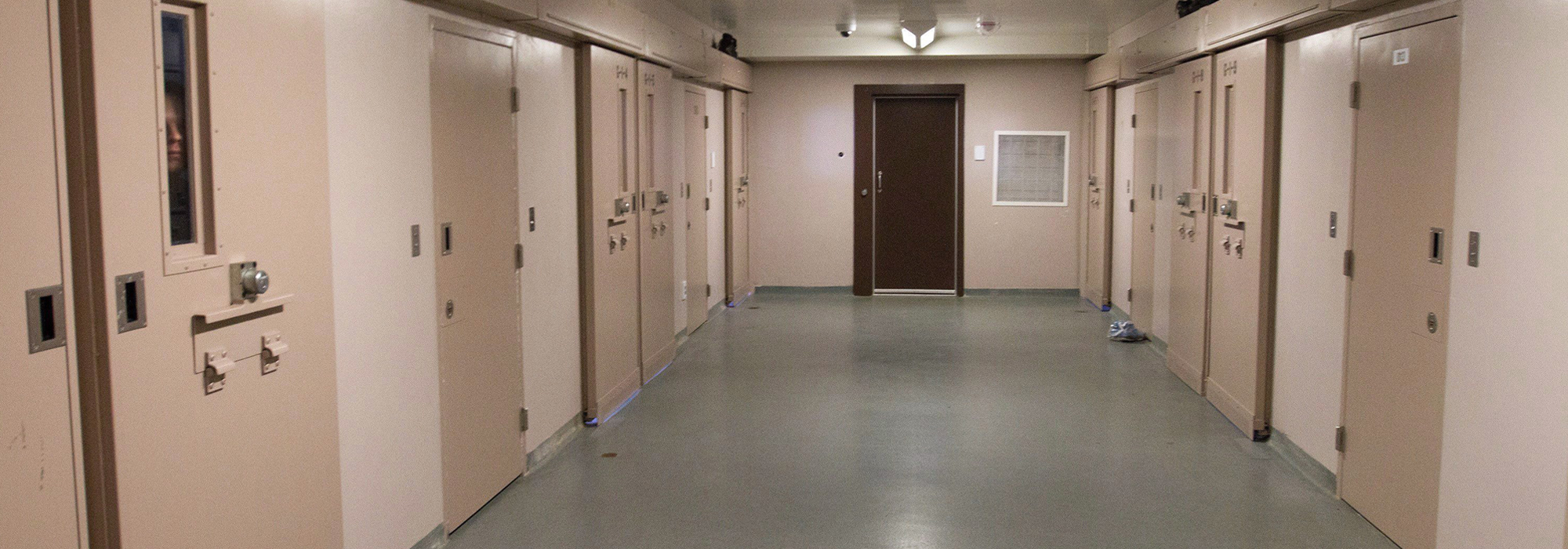
With an election looming, Canadians are hearing more talk about the importance of being tough on crime, along with the claim that our justice and prison systems are too lenient on criminals. We are encouraged to think that the success of a justice system is measured by the length of prison sentences and little else. What is rarely brought up is the ongoing negative consequences of the last wave of tough-on-crime laws (2007-14), which increased the number of mandatory minimum sentences, introduced consecutive life sentences and created barriers to early release and community reintegration for incarcerated people.
The overall aging of the prison population is one of these consequences. It is a perfect example of how tough-on-crime laws not only don’t keep us safer but instead create extensive and long-lasting societal harm. The proportion of people in federal institutions who are over 50 (considered the start of being a “senior” in prison research because a prisoner tends to have the problems of someone in the community who is 10 to 15 years older) has more than doubled in the last decade and now stands at 25 percent. While the overall incarceration rate of Canadians has remained stable for decades, the prison groups that are increasing in number are those marked by vulnerabilities: older prisoners, women and Indigenous persons. On average, 35 people die of natural causes in federal custody every year.
This change in the demographics of prisoners raises several issues that I have documented and discussed in Punished for Aging: Vulnerabilities, Rights and Access to Justice in Canadian Penitentiaries (University of Toronto Press, 2019). I present the experiences of 197 individuals living their “golden years” behind bars, and I expose the disproportionate suffering that incarceration means for these people. I review and critique the responses of various institutions that have failed aging prisoners at every step of the way: prisons, parole boards, tribunals and courts.
There are many reasons why average Canadians should care about the aging of the prison population and about the policies that have led us here:
First, prisons are not nursing homes but are increasingly asked to fulfill such roles. The American system is known for mass incarceration, and handing down life sentences without possibility of parole is common. Aging in prisons has (unfortunately) been inevitable in the US, and the country’s prisons have developed nursing homes and hospice programs. But Canadian prisons are not prepared to meet the needs of their ever sicker and older population. A joint report of the Office of the Correctional Investigator and the Canadian Human Rights Commission, Aging and Dying in Prison (February 2019), confirmed the unsettling reality that older people inadvertently face as part of their sentence.
Growing numbers of prisoners with illnesses and disabilities struggle with the old and non-accessible infrastructure of institutions. They are deprived of adequate pain medication due to security concerns and do not receive specialized care because of the logistical difficulties often associated with transfers from prisons to hospitals. Prisoners die from preventable causes as a result of the chronic shortage of health professionals and inadequate training of prison first responders. Inadequate responses to health problems are also a public health hazard: people’s health worsens while in prison and they die prematurely (in prison, the average age at death is 60, compared with 82 in the community, and those released from prison live a decade less, on average, than those who have never been incarcerated). Those who are released bring their illnesses to the community, putting financial and psychological stress on their families and burdening the health-care system.
Second, older prisoners face tremendous difficulties obtaining compassionate or medical release (it is virtually nonexistent in Canada), even though many are physically or mentally incapable of reoffending. What kind of risk would someone with dementia, who barely remembers their name, pose to society? Holding sick people in prison is expensive. The average cost of keeping a person in a Canadian prison is between $100,000 and $200,000 a year, so the cost of housing and caring for sick prisoners is well above that. Often, they need to be placed in segregation for their own protection, and they need to be escorted to the community for every medical treatment. Creating community services and supports to release low-risk people is not cheap, but it is much cheaper, more humane and less dangerous for public health than incarceration.
Third, Canada does not sentence people to life without possibility of parole. By the very design of the system, death in custody should be exceptional. One of the goals of corrections is to rehabilitate and reintegrate people into society. Even those serving a life sentence should not stay in custody beyond the point when they are deemed not to be a risk to society, and older people pose, in general, a significantly lower risk of reoffending. These principles have been serving Canada well and have maintained both low crime rates and low rates of death in custody. Yet over the last decade we have seen these principles eroded, as more and more individuals spend their final years in prisons, bedridden, laden with chronic, acute and terminal illnesses, suffering from dementia and in need of palliative care.
Incarceration thus has disproportionate effects on these people compared with the impacts on their younger peers serving similar sentences. Such disproportionate punishment may be inhumane, and it often endangers not just the health but the life of those experiencing it. So the continued incarceration of many old and sick people could be in breach of various laws including the Charter of Rights and Freedoms. While people may not care much about prisoners’ rights, they probably care about their own rights. And once we allow the rights of one group to be violated, it is just a matter of time until the rights of other groups are also violated.
As Canadians prepare to cast their vote in the October federal election, they should reflect on the fact that each person kept in prison for pure vengeance rather than true risk, and each prison built to accommodate more people, limits the funds for building new hospitals, schools and hospices and for investing in community supports. Canada does not need longer and tougher sentences that drain the economy and pose a danger to public health. Canada does not need political posturing and hollow claims of concern for public safety.
Instead, Canada needs politicians who will introduce laws that eliminate mandatory sentences and consecutive life sentences and return discretion to the court system. Judges must be able to assess the effects of sentences on old and sick persons and to consider whether the costs associated with such sentences are truly justified, in each case, by specific public safety concerns. Canada needs a reform of release mechanisms to allow for the compassionate release of sick and old people who are no longer a risk to communities. Canada needs concrete political plans for creating and improving existing community supports (including health services, child support, employment) for marginalized people and for those released from prisons.
Canadians should ask their local candidates about the place that reforms to corrections have on their parties’ political agendas. It is not too late to demand commitments to meaningful change in our prison system. These issues impact all of us, so we need to make it clear to our representatives that failure to address them amounts to a failure to serve our interests.
Photo: An inmate looks out from a maximum security cell at the Collins Bay Institution in Kingston, Ont., on Tuesday, May 10, 2016. The Canadian Press / Lars Hagberg
Do you have something to say about the article you just read? Be part of the Policy Options discussion, and send in your own submission. Here is a link on how to do it. | Souhaitez-vous réagir à cet article ? Joignez-vous aux débats d’Options politiques et soumettez-nous votre texte en suivant ces directives.








